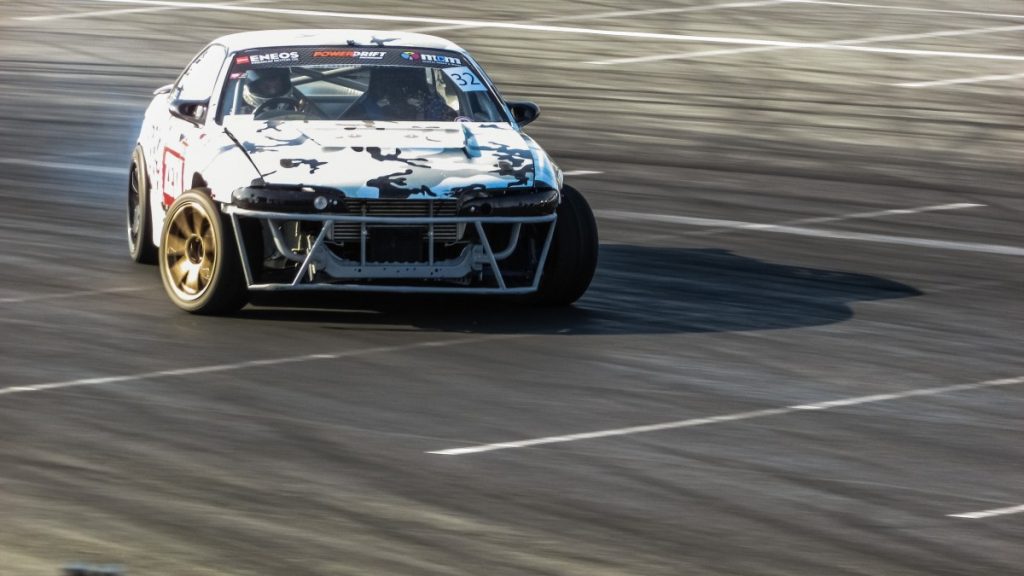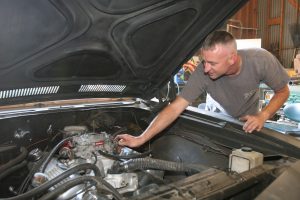The anti-roll bar, also known as the stabilizer bar, is a crucial element in handling a vehicle. Its exact role is confusing for many people, but we will explain exactly how it works.
Anti-roll bar: definition
First, let’s define what roll is in a vehicle: the car has suspensions, which are used for road holding and passenger comfort. These suspensions, as in a boat, induce the following parasitic movements:
- Pitching: an oscillation of the vehicle about its longitudinal plane. Alternatively, it plunges from the front and the back;
- Rolling: an oscillation between the right and left sides of the vehicle. When the roll is too pronounced, the driver can lose control of the car at worst.
Therefore, the anti-roll bar mitigates this rolling phenomenon by elastically connecting the right and left suspensions (there is one anti-roll bar at the front and one at the rear).
The function of the anti-roll bar
The anti-roll bar is a solid forged steel tube with a high elasticity coefficient. It is connected to the lower arms on each side of the vehicle. It can be arched or straight (at the rear, it is often a torsion bar that acts as an anti-roll bar).
When a curve is approached, the car lies on the outside. The anti-roll bar, subjected to two opposing forces at its ends, limits the travel of the two suspensions and the amplitude of the roll. It also slows down the speed of depression and relaxation of these two suspensions, avoiding the phenomenon of frequency amplification.
Maintenance of the anti-roll bar
The robust construction of the anti-roll bar limits the possibility of it breaking. Malfunctions most often occur at the level of its fasteners. The peripheral fixtures on the lower arms are made of silent blocks, and the two holding bearings on the frame.
Deterioration symptoms

Deterioration of the anti-roll bar results in rattling while driving due to wear of the silentblocks and contact with the metal parts.
The diagnosis is often difficult to establish:
an initial visual examination can reveal wear or tearing of the silent-blocks;
a thorough investigation will be carried out with a lever pressing on the bar to reproduce the slamming. The difficulty lies in the tension force of the bar, which masks these plays and noises.
The cost of the repair
How much does it cost to repair an anti-roll bar? In the very rare case of a complete replacement of the anti-roll bar, the operation, which generally takes only 1/2 hour to 1 hour, will cost approximately $250 to $400 (bar + silentblocks + labour);
More generally, the silentblocks alone will be involved, and the repair cost will average $40 to $100 (silentblocks + labour).
Please note: there are bar variants with intermediate ball joints; these ball joints are regularly the cause of noise and rattling.
Suppliers of spare parts
Where to find spare parts? The complete anti-roll bars will often only be available in origin at the brand dealers;
Silentblocks and connecting rods are available from traditional car parts distributors and on specialized websites. In this case, the prices can be 10 times lower than the original parts in the dealership.
Hope the information in this post has satisfied your search. Don’t forget to leave a comment below.
Read more:
– All About the Gas Shock Absorber;
– Shock Absorber Cup: Malfunction and Cost;
– What to Do if Your Shocks Squeak;
– What Is the Stabilizer Bar Linkage?
– How to Tell if Your Shock Absorber Springs Are Bad;
– Half Front Axle: Functions, Maintenance, and Its Cost
– Why Choose Steering Wheel Paddles?




